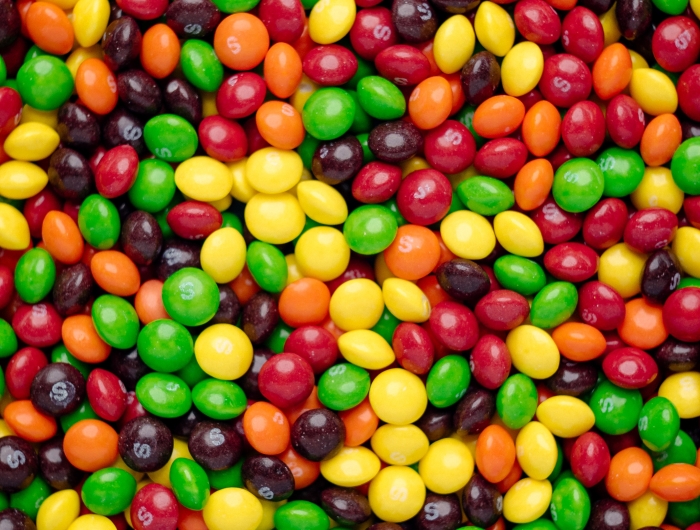California urged to adopt warning labels on synthetically dyed foods and supplements

Karsten Winegeart - unsplash.com.
State has already found that food dyes “cause or exacerbate neurobehavioral problems in some children”
The state of California should require warning labels on synthetically dyed foods and supplements given that the state has determined that synthetic food dyes can cause or exacerbate neurobehavioral problems in some children, according to the Center for Science in the Public Interest. In a regulatory petition today filed with the California Department of Public Health, the nonprofit nutrition and food safety watchdog group, alongside partner organizations and scientists, said that warning labels could help inform parents, guardians, schools, and others who purchase foods and drinks for kids to better understand—and mitigate—the risks.
CSPI has been urging the Food and Drug Administration to ban eight synthetic food dyes since 2008, after studies conducted in the early 2000s showed dyes have adverse behavioral effects on some children, including ADHD-like symptoms that disrupt classroom learning. Those dyes are Yellow 5, Red 40, Blue 1, Blue 2, Green 3, Red 3, Yellow 6, and the rarely used Orange B. (CSPI and others are separately petitioning FDA to eliminate Red 3 from foods since the agency has already determined that it is a carcinogen inappropriate for use in cosmetics.)
But in 2021, California’s influential Office of Environmental Health Hazard Assessment (OEHHA) issued its own rigorous, comprehensive—and blistering—assessment of synthetic dyes impact on children’s behavior. According to OEHHA, examples of the neurobehavioral effects caused or exacerbated by dyes in children include hyperactivity, inattentiveness, and restlessness with some studies also reporting effects such as sleeplessness, irritability, and aggression.
Chronic exposure to dyes may impact children’s ability to learn, succeed at school, and get along with peers on an ongoing basis, with serious long-term consequences, according to the petition. “For the child who is affected and their family, their teachers, and the school system, a short-term increase in inattentiveness or restlessness and anxiety that can be repeated routinely when food dye is consumed could reduce social and academic success,” according to the OEHHA report.
California law gives the state’s health department statutory authority to “prescribe conditions under which a color additive may be used.” According to CSPI, a warning label would be an appropriate condition of use of synthetic dyes. The text of the label proposed in the petition is “WARNING: Product contains synthetic food dyes which the State of California has determined can result in hyperactivity and other neurobehavioral problems in some children.”
CSPI says the requirement should also extend to restaurant menus which offer synthetically dyed menu items.
“Parents deserve to know if the cereal, yogurt, candy, or drink mix in their shopping cart might have an adverse impact on their child’s health and happiness, and California has an opportunity to help them,” said CSPI principal scientist for food additives and supplements Thomas Galligan. “And if California’s requirement causes manufacturers either to use the warning label nationwide, or better yet, to reformulate their products without these unnecessary and harmful chemicals, even parents outside California may stand to benefit.”
One study found that about 90 percent of child-oriented candies, fruit-flavored snacks, and drink mixes in a sampled grocery store contain synthetic food dyes. Skittles, produced by Mars, contain Red 40, Yellow 5, Blue 2, Yellow 6, and Blue 1. (Skittles are also colored with titanium dioxide, which CSPI recommends consumers avoid.) General Mills’ Trix cereal contains Red 40, Yellow 6, and Blue 1. Pillsbury’s ready-to-bake Christmas Tree Sugar Cookie Dough has Yellow 5, Yellow 6, Blue 1, and Red 40.
And while dyes are often used to simulate the presence of bright fruit colors, sometimes dyes stand in for missing vegetables: Ortega’s Guacamole Style Dip contains no whole avocado. Rather, it contains less than 2 percent avocado powder and gets color from Yellow 5 and Blue 1.
This petition comes on the heels of a letter sent last week by former State Senator Bob Wieckowski to CDPH Director Dr. Tomás Aragón, which similarly urged the agency to take regulatory action on synthetic dyes. Wieckowski championed the dyes issue in the California legislature for many years, playing a crucial role in securing support and funding for the OEHHA assessment. He recently completed his final term as State Senator, having reached his term limit.
“As you are aware, it can take the federal government, specifically the FDA, a long time—too long—to act on food and health issues,” Wieckowski said, “I respectfully suggest, as we have done in the past, that California should not wait for action by another entity but should move ahead with measures to protect our people, especially when it comes to children. Therefore, it is my hope that the Department can take an administrative or regulatory action to help ensure that parents can better protect their children from harmful synthetic food colorings.”
The petition was jointly submitted on behalf of Environmental Working Group, Children’s Advocacy Institute, Public Health Institute, Consumer Federation of America, Center for Food Safety, Life Time Foundation, Breast Cancer Prevention Partners, former CSPI scientist Lisa Lefferts, and former director of the National Institute of Environmental Health Sciences Linda Birnbaum.
Tags
Topics
Contact Info: Lisa Flores, 202-777-8368 or Jeff Cronin, 202-777-8370

